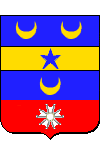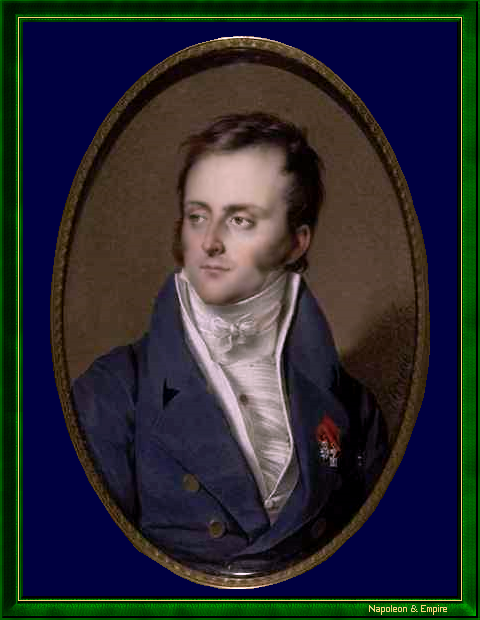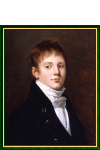Charles Angélique François Huchet de La Bédoyère
Officer of the Légion d'honneur
Pronunciation:

Charles Angélique François Huchet de La Bédoyère was born in Paris on April 17, 1786, into a Breton family of old stock (the Huchets, of Irish origin, had settled in Brittany in the 14th century during the wars of Breton succession, and were allied to the de la Bédoyère family in the 15th century) and included many magistrates.
He soon embraced a career in arms, first as a private soldier, then as second lieutenant in the 2nd company of gendarmes d'ordonnance in 1806, with whom he fought in Germany and Pomerania in 1807, particularly at Friedland on June 14, 1807.
In January 1808, La Bédoyère was appointed aide-de-camp to Jean Lannes, whom he accompanied to Spain, then to the Austrian campaign in spring 1809 (Eckmühl, Aspern-Essling). In June 1809, he became aide-de-camp to prince Eugène de Beauharnais, and followed him to Italy, where he remained until 1812.
He then took part in the terrible French invasion of Russia, fighting at Borodino on September 7, 1812, then during the retreat at Malojaroslavets on October 24, and at the Berezina crossing on November 26, 27 and 28.
In May 1813, La Bédoyère was given command of the 112th line infantry regiment, under Marshal Étienne Macdonald. He took part in the battles of Battle of Bautzen on May 20 and 21, and Goldberg on August 23, where he was wounded.
He defended Paris on March 30, 1814, and resigned after the first abdication of Napoleon. A little later, he accepted command of the 7th Regiment of the line, stationed at Chambery, Savoy.
On Napoleon I's return from Elba, La Bédoyère was sent to Grenoble to halt the usurper's progress. But he distinguished himself by being the first colonel in the army to abandon the king's flag in favor of the Emperor's one, and accompanied him on his march to Paris.
Napoleon was grateful, and, during the Hundred Days, made him successively brigadier general, Peer of France and aide-de-camp. It was in this capacity that La Bédoyère took part in the battles of Ligny, Quatre-Bras and finally Waterloo, with the well-known outcome.
At the June 23, 1815 session of the Chambre des Pairs, he asked for Napoleon II's recognition, in such vehement terms against his colleagues that André Masséna said: Jeune homme, vous vous oubliez! (Young man, you forget yourself!)
On June 29, Napoleon I left La Malmaison for Rochefort and asked La Bédoyère to accompany him into exile.
On the advice of his friend Queen Hortense de Beauharnais, La Bédoyère left Paris and obtained a passport for America. It was then that he made the mistake of returning to Paris to bid farewell to his wife and son, even though his name was listed as the second most treacherous on the proscription decree of July 24, 1815. He was arrested on August 2, then brought before a war council on August 14, which found him guilty of treason and rebellion and sentenced him to death.
On August 19, 1815, he was shot at the Barrière des Ministres, on the plaine de Grenelle, with himself commanding the firing squad.
Charles de La Bédoyère was buried in the 16th division of the Père-Lachaise cemetery in Paris .
"Charles Angélique François Huchet de La Bédoyère". XIXth century miniature.

Other portraits

"Charles Angélique François Huchet de La Bédoyère", by Robert Lefèvre (Bayeux 1755 - Paris 1830).